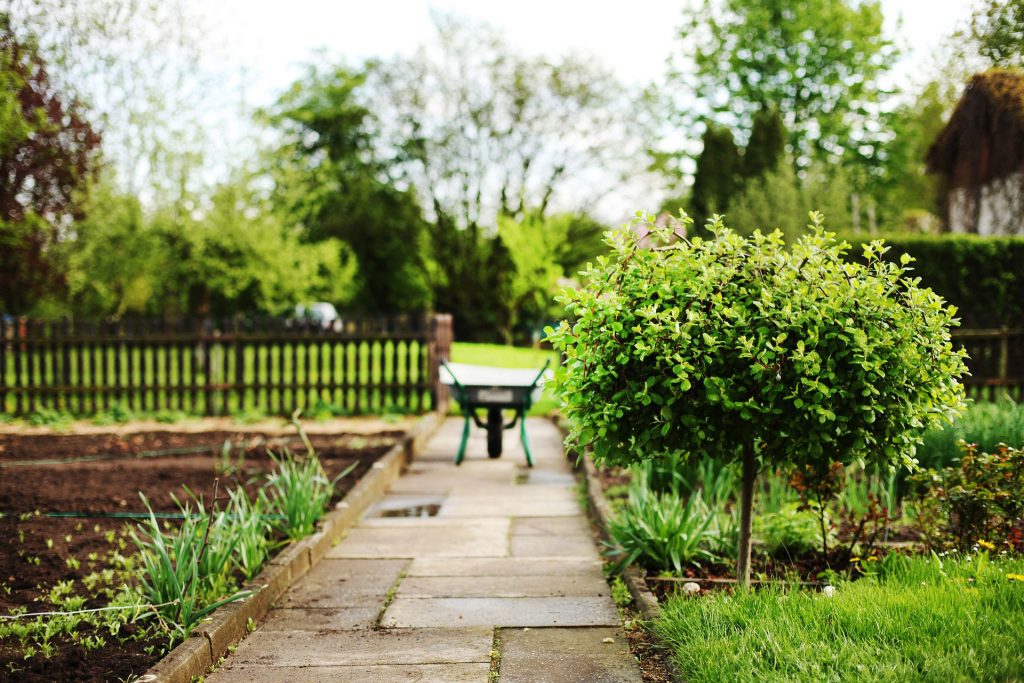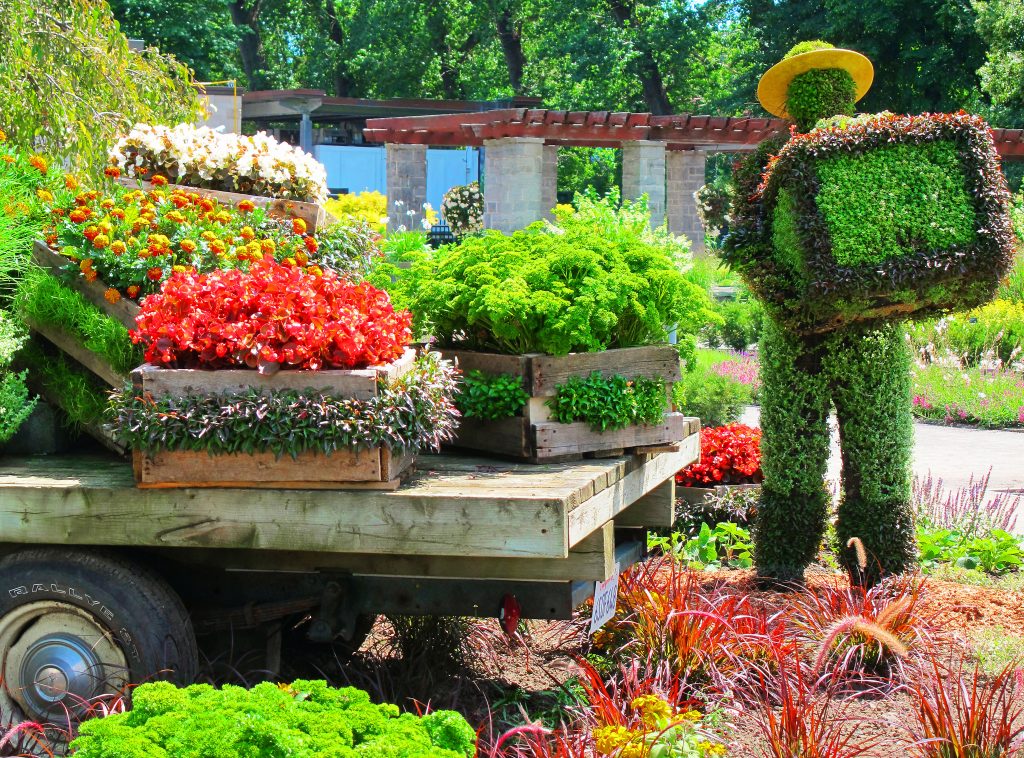Landscape design is the art of shaping and organizing outdoor spaces to create visually appealing, functional, and harmonious environments. A well-designed outdoor space not only enhances the aesthetic appeal of a property but also offers a sanctuary for relaxation, entertainment, and connection with nature. Landscape design in Prescott thrives due to the city’s unique blend of natural beauty, diverse terrain, native flora, and architectural charm. In this blog, we’ll explore how expert landscape design can elevate your space in Prescott.
The Role of Landscape Design
Landscape design plays a pivotal role in shaping our outdoor environments, making them not just visually appealing but also functional, sustainable, and harmonious with nature. Whether it’s a small backyard, a sprawling estate, a public park, or a commercial property, the role of landscape design is multifaceted and essential for several reasons:
Aesthetic Enhancement
One of the primary roles of landscape design is to enhance the visual appeal of outdoor areas. Designers use their creative talents to arrange plants, flowers, trees, and hardscape features in a harmonious and pleasing way. This not only adds beauty but also creates a sense of tranquility and serenity.
Functionality
Beyond aesthetics, landscape design focuses on making outdoor spaces more functional. This can include creating areas for relaxation, entertainment, dining, or play. Designers consider the needs and preferences of the property owner, ensuring that the landscape serves practical purposes while maintaining its beauty.
Environmental Sustainability
Responsible landscape design takes into account the ecological impact of outdoor spaces. Designers choose native plants and implement sustainable practices to conserve water, reduce energy consumption, and support local ecosystems. This eco-conscious approach is vital for preserving the environment and minimizing the carbon footprint.
Property Value
A well-designed landscape can significantly increase the value of a property. It creates curb appeal, making the property more attractive to potential buyers or renters. Properly designed and maintained landscapes can yield a high return on investment, making landscape design a wise financial decision.
Emotional Well-being
Outdoor spaces designed with care can have a profound impact on the well-being of individuals. Exposure to nature and aesthetically pleasing surroundings can reduce stress, improve mood, and promote a sense of happiness and contentment. Landscape design contributes to creating outdoor sanctuaries that nurture mental and emotional health.
Elements of Expert Landscape Design
Expert landscape design combines artistry, functionality, and sustainability to create outdoor spaces that are both visually captivating and practical. To achieve this, professional landscape designers focus on several key elements:
- Hardscaping and Softscaping Integration: In expert landscape design, hardscape features like patios and pathways seamlessly blend with softscaping elements such as plants and trees, creating a harmonious and functional outdoor space.
- Plant Selection and Arrangement: Expert designers carefully select and arrange plants, considering factors like color, size, and seasonal variation, to ensure a visually appealing and thriving landscape that complements the surroundings.
- Efficient Lighting and Irrigation: Professional designs incorporate efficient lighting to enhance nighttime ambiance and irrigation systems that conserve water and maintain optimal plant health, ensuring sustainable and beautiful landscapes.
- Sustainability and Environmental Considerations: Expert designers prioritize sustainability by using native plants, eco-friendly materials, and responsible landscaping practices, minimizing the environmental impact and supporting local ecosystems.
- Maintenance Considerations: Thoughtful design includes low-maintenance elements and clear maintenance plans. This ensures that the landscape remains vibrant and easy to care for over the long term, reducing upkeep efforts.
Showcasing Prescott's Landscape Design Trends
Prescott’s landscape design trends reflect a unique blend of the city’s natural beauty and the desire for sustainable, functional, and visually appealing outdoor spaces. Here are some of the key trends that are currently shaping landscape design in Prescott:
Incorporating Desert Landscaping
Prescott’s arid climate inspires a shift towards desert landscaping. Designers use drought-resistant plants, succulents, and cacti to craft stunning, water-efficient gardens that thrive in the region’s unique conditions while embracing the beauty of the desert landscape.
Drought-Tolerant Design Elements
Water conservation is a top priority in Prescott’s landscape designs. Through xeriscaping, efficient irrigation, and mulching, designers reduce water consumption, creating lush and vibrant outdoor spaces that endure the city’s dry spells.
Outdoor Living Spaces
Prescott residents are embracing outdoor living. Landscape designers create inviting spaces with fire pits, pergolas, and comfortable seating, transforming backyards into cozy havens for relaxation and social gatherings, celebrating Prescott’s pleasant climate.
Sustainable Landscaping Practices
Sustainability is at the forefront of Prescott’s landscape designs. Rainwater harvesting, permeable pavers, and recycled materials reduce environmental impact. Native plants and eco-conscious practices further promote sustainability, aligning landscapes with the city’s commitment to a greener future.
The Landscape Design Process
The landscape design process is a systematic journey that transforms outdoor spaces into beautifully functional environments. Here’s a breakdown of the key stages in this process:
1. Initial Consultation and Site Assessment
The process begins with a thorough client consultation and site assessment. Designers evaluate the property, understand the client’s vision, and consider site-specific factors like soil quality and climate to lay the foundation for the project.
2. Concept and Design Development
Designers translate the gathered information into a comprehensive landscape design concept. This phase involves selecting plants, materials, and hardscape elements to create a detailed plan that aligns with the client’s goals.
3. Installation and Construction
Once the design is approved, the installation and construction phase begins. Skilled professionals bring the design to life, implementing features like planting, hardscaping, and irrigation systems, ensuring that the project is executed according to the plan.

4. Maintenance and Ongoing Care
After the project is complete, ongoing maintenance and care are essential to preserve the landscape’s beauty and health. This phase includes routine tasks like pruning, fertilizing, and seasonal adjustments to ensure the landscape thrives and evolves over time.
Sustainability and Eco-Friendly Design in Prescott
Sustainability and eco-friendly design have become integral principles in shaping the landscapes of Prescott, Arizona. This charming city, known for its natural beauty and desert climate, has embraced environmentally conscious practices in landscaping to reduce water usage, preserve local ecosystems, and promote a greener future. Here are key aspects of sustainability and eco-friendly design in Prescott:
- Native Plant Selection: Prescott’s eco-friendly landscape designs often incorporate native plants that are well-adapted to the local climate. These plants require less water and maintenance, reducing the environmental impact.
- Efficient Irrigation: Sustainable designs prioritize water conservation by implementing efficient irrigation systems like drip irrigation or smart controllers that adjust watering schedules based on weather conditions.
- Permeable Hardscapes: Many eco-friendly designs in Prescott include permeable hardscape materials like permeable pavers or gravel paths. These materials allow rainwater to penetrate the soil, reducing runoff and helping to recharge groundwater.
- Rainwater Harvesting: Sustainable landscapes often feature rainwater harvesting systems that collect rainwater from roofs and other surfaces. This harvested water can then be used for irrigation, reducing the need for potable water.
- Low-Impact Materials: Eco-friendly designs prioritize the use of environmentally responsible materials, such as recycled or locally sourced products. This reduces the carbon footprint associated with construction and supports sustainable practices.

Maintaining Your Beautiful Prescott Landscape
Maintaining your beautiful Prescott landscape is essential for preserving its aesthetic appeal and health. In this high-desert climate, regular care is vital. Seasonal tasks like pruning, mulching, and irrigation adjustments ensure plant health, while weed control and pest management maintain the landscape’s pristine appearance. Staying mindful of Prescott’s specific weather conditions and native flora is crucial for long-term success. With proper attention, your landscape will continue to thrive, providing enjoyment and enhancing the value of your property year after year.
Finding the Right Landscape Designer in Prescott
Finding the right landscape designer in Prescott is crucial to transforming your outdoor vision into reality. Here are key steps to help you make an informed choice:
- Research and Referrals: Start by researching local landscape designers in Prescott. Seek referrals from friends, neighbors, or online reviews to identify experienced and reputable professionals who have a strong track record in the area.
- Portfolio Review: Examine the portfolios of potential designers to assess their style, creativity, and versatility. Look for projects that align with your vision, whether it’s desert landscaping, sustainable design, or outdoor living spaces.
- Credentials and Licensing: Ensure that the designer has the necessary credentials, licenses, and certifications. A reputable designer should be knowledgeable about local regulations and zoning codes in Prescott.
- Interview and Consultation: Schedule interviews or consultations with shortlisted designers to discuss your project. Pay attention to their communication skills, understanding of your goals, and willingness to collaborate. The right designer should be attentive to your needs and preferences.
- Budget and Contract: Request detailed project proposals and estimates from the designers. Compare the scope of work, costs, and timelines. Select a designer who aligns with your budget and can clearly outline the terms and conditions in a formal contract, including payment schedules and project milestones.
Prescott’s landscape design is a testament to the city’s commitment to sustainability, functionality, and the celebration of its natural beauty. By embracing elements like native plants, xeriscaping, and eco-conscious practices, Prescott residents are not only conserving precious resources but also creating outdoor spaces that harmonize with the region’s unique environment.
Whether it’s the allure of drought-tolerant gardens, inviting outdoor living spaces, or wildlife-friendly landscapes, Prescott’s eco-conscious designs offer a diverse palette for those seeking to enhance their outdoor experience while preserving the city’s scenic charm. To bring your vision to life, contact us or visit our website and embark on a journey towards a sustainable and stunning outdoor haven in Prescott.











